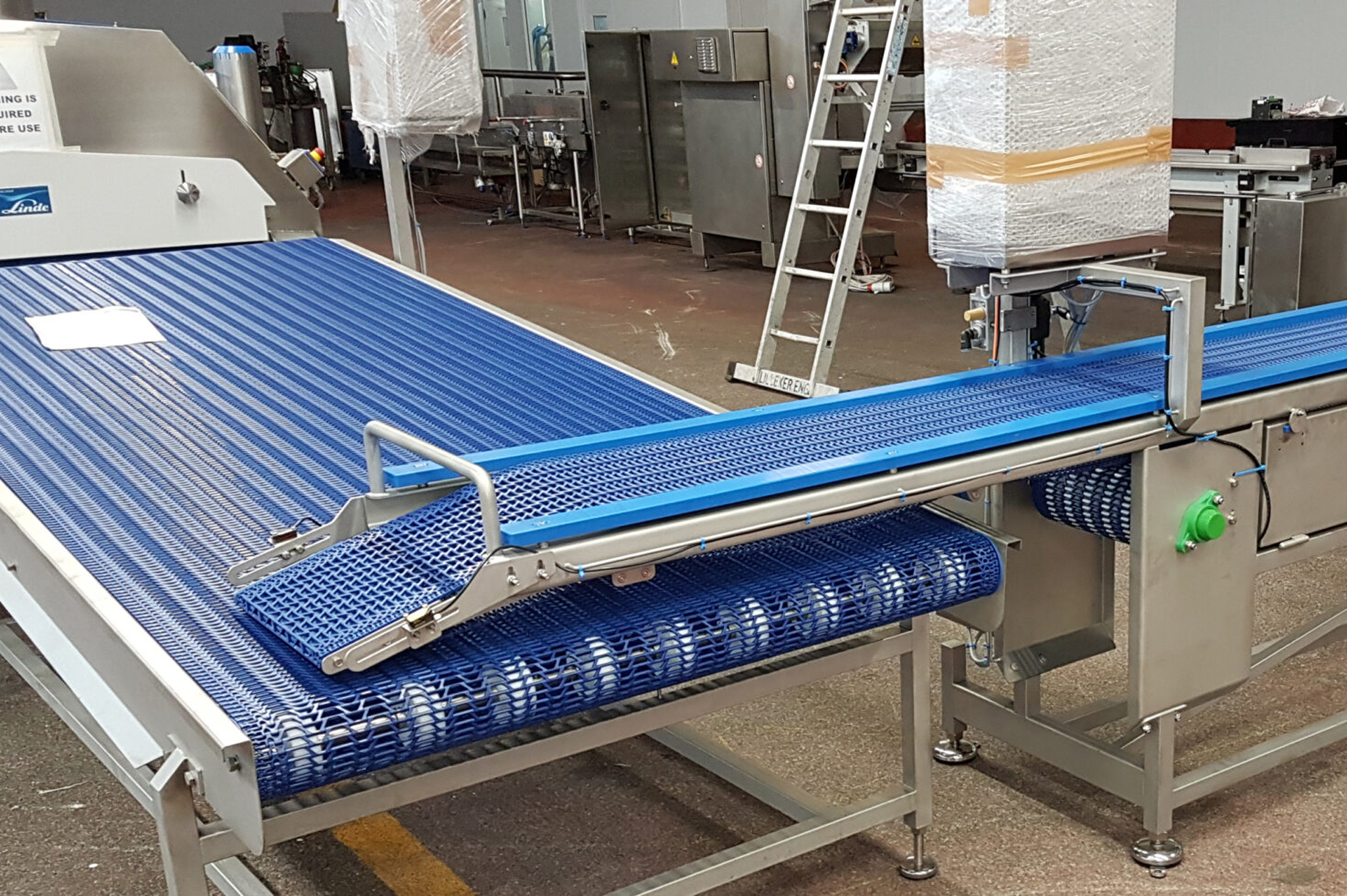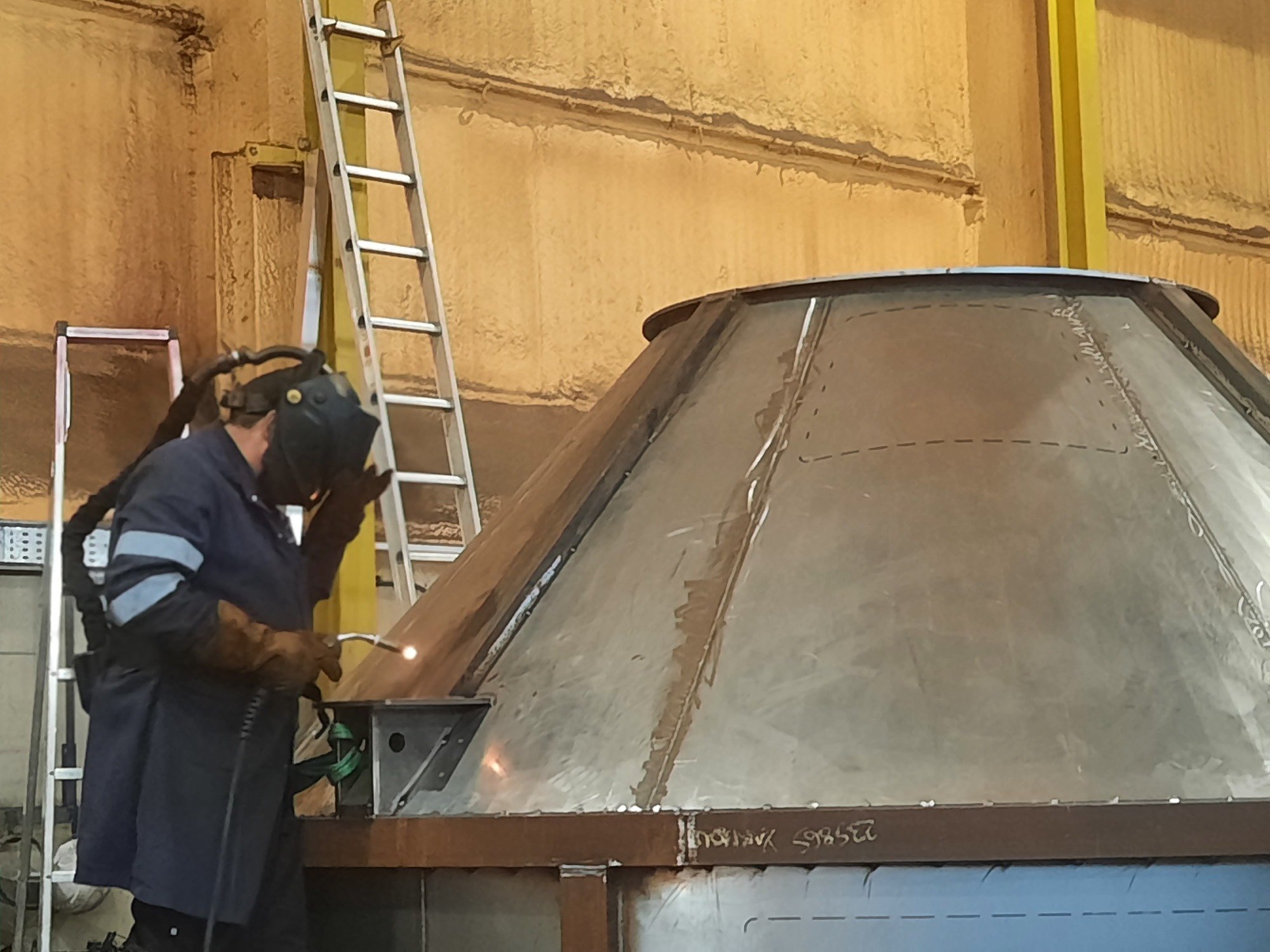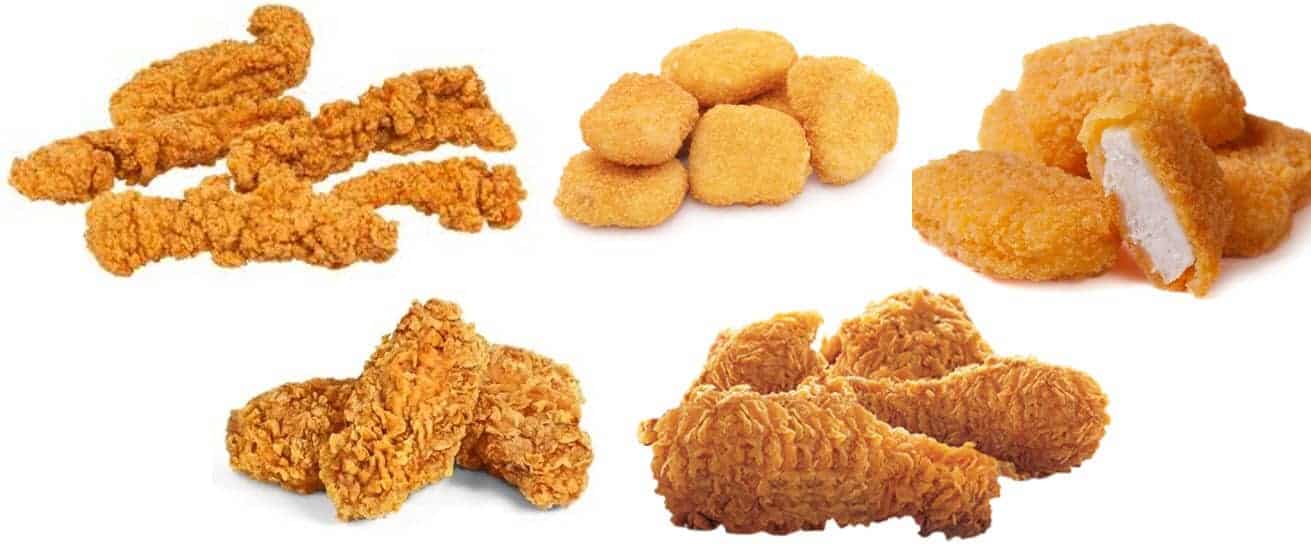Manufacture of large Chimney Stacks and Cyclones for herb production facility. Project: Camstar Herbs -…
Deboning and trimming is a vital step in the manufacturing process by which a carcass is finished ready for sale. The deboning process entails removing bones from the carcass. This is ordinarily done via one of two ways.
Deboning and trimming are processes used in the meat industry to prepare cuts of meat for consumption.
Deboning is the process of removing bones from a cut of meat. This can be done by hand or with the use of specialized equipment. Deboning is typically done to create boneless cuts of meat, such as boneless chicken breasts or boneless pork loins.
Trimming is the process of removing excess fat and other unwanted parts from a cut of meat. This can include removing the skin, fat, and sinew from a piece of meat. Trimming is typically done to create leaner cuts of meat and to remove any parts that may not be suitable for consumption.
Both deboning and trimming are important steps in the meat processing industry as it helps to create a more desirable product for the consumer and increase the yield of the final product.
- Table deboning
- Pace deboning
Table deboning is often best employed on cuts of meat that come from non-uniform carcasses. This method can be time and labour intensive and requires skilled workers to carry out the task.
Pace deboning, meanwhile, employs a conveyor belt system to transport a product from terminal to terminal. At each stop a worker makes one specific cut. This system can be very fast and efficient, moreover does not require skilled workers. However, pace deboning is best used only when working with uniform carcasses.
Once meat has been deboned, it then needs to be trimmed and packaged.

Tailored Deboning and Trimming Solutions
Trimming and deboning are important steps in meat production that can affect the quality, safety, and profitability of the final product. Here are some issues to consider when trimming and deboning meat:
- Yield: Trimming and deboning can affect the yield of meat. Careful trimming can maximize the amount of usable meat, while excessive trimming can lead to a decrease in yield and profitability.
- Food safety: Trimming and deboning can also affect the safety of meat products. Cross-contamination can occur if the same tools are used for different cuts or if contaminated meat comes into contact with other meat products. It is important to use clean and sanitized tools and surfaces to prevent foodborne illness.
- Quality: The quality of meat can be affected by trimming and deboning practices. Removing too much fat can result in dry and tough meat, while leaving too much fat can result in a greasy texture and off-flavors. Careful trimming can result in a high-quality product that meets customer expectations.
- Efficiency: Trimming and deboning can be time-consuming and labor-intensive processes. It is important to have skilled workers and efficient equipment to maximize productivity and minimize costs.
- Waste management: Trimming and deboning can generate a significant amount of waste, including bones, fat, and trimmings. Proper waste management practices are important to reduce environmental impact and comply with regulations.
- Consistency: Consistency is important in meat production to ensure that customers receive a consistent and high-quality product. Standardized trimming and deboning practices can help achieve this goal.
Overall, trimming and deboning are important considerations in meat production that can affect yield, food safety, quality, efficiency, waste management, and consistency. Careful attention to these issues can help produce a high-quality and profitable product.
A well-designed deboning and trimming process should enable an operation to run efficiently with little downtime while also automating as many processes as possible to minimise manual intervention. It should also create an integrated line that runs seamlessly from one process to another.
At Wrightfield, we provide solutions that are tailored to the requirements of an individual operation. This is a factor that helps to optimise efficiency and yield as well as improving output. Ultimately, it is our goal to help a company to increase productivity and profitability.
Our experienced design team can advise and identify the optimal combinations of technologies to meet your needs, while our adept engineering team will fully install and integrate all the requisite hardware and software systems.
Deboning and Trimming – Find Out More
Click on the following link if you would like to find out more about deboning and trimming, or this link for information on other stainless steel equipment manufactured by Wrightfield.




